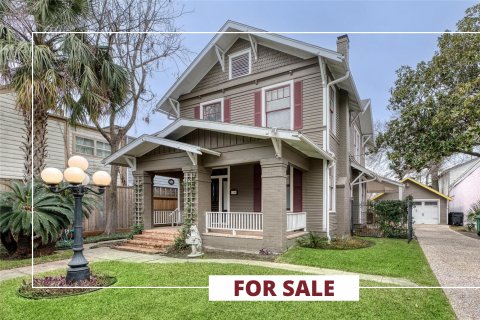How de Gournay Created the Finest Hand-Painted Wallpaper in the World
Hannah Cecil Gurney Discusses Ballets Russes and de Gournay's First Book
BY Rebecca Sherman // 10.26.20Hannah Cecil Gurney at home in London. De Gournay Sans Soucis wallpaper, painted and hand-embroidered on silk. (Photo by Douglas Friedman)
Claud Cecil Gurney wrote his new book, de Gournay: Hand-Painted Interiors (Rizzoli), while at home in the Kent countryside, with his German Shepherd Mowgli as company and a riotously blooming garden for inspiration. There couldn’t be a more apt setting for Gurney to chronicle the story of the legendary company he founded in 1986; after all, de Gournay’s hand-painted wallpapers are rooted in the tradition of centuries-old chinoiserie panels, often depicting lavish, vibrantly hued garden scenes.
De Gournay papers grace the walls of well-known people and places around the world — the homes of Kate Moss and Gwyneth Paltrow and the interiors of Annabel’s in London, to name a few. The company has recreated 18th-century hand-painted chinoiserie wallpaper panels found in the attics of Houghton Hall and collaborated with design luminaries India Mahdavi and Alessandra Branca. With his showrooms worldwide, de Gournay offers French 19th-century panoramic and Art Deco designs, fabrics, porcelains, and, most recently, a collaboration with fashion house Erdem. But to understand the hard-won, unbounded success of de Gournay, one must first appreciate the twists and turns that Gurney navigated to create some of the finest hand-painted papers in the world.

As he writes in the book’s introduction, Gurney sought to buy 18th-century hand-painted Chinese wallpapers to decorate his London townhouse, such as what graces many of England’s grandest estates. To his dismay, they proved both hard to find at auction and too expensive. Then, a bolt of genius: he would go straight to the source and commission hand-painted wallpapers from artists in China. In the early ’80s, China was just starting to open up economically to the West, and Gurney seized the chance not only to buy works of art but to explore the idea as a business opportunity.
His arrival in Beijing was met with much fanfare by the Chinese government, and he was whisked from the airport in a chauffeured black Mercedes with entourage. “It was much more fun to go and set up a studio than to buy an antique set of papers at auction,” he writes.

Unfortunately, he soon discovered that — like most of China’s ancient heritage — the art of painting wallpapers on silk had been lost under decades of Communist rule. Undeterred, Gurney set out to retrain artisans there and found himself navigating uncharted waters. The studio operated at the pleasure of the Communist Chinese government, and contracts were often agreed upon with cigarettes and brandy, which he brought to Beijing in copious amounts. He also brought photographs of historic English rooms with antique Chinese wallpapers for the artists to copy.
Over time, Gurney quietly strayed from government oversight and opened illegal painting studios out of rented houses in rural areas of China. There, he employed hundreds of artists in secret until the laws allowing foreigners to operate businesses changed. Success wasn’t overnight; it took years before the painting quality met Gurney’s expectations, and until he was able to source the most beautiful silk and handmade papers to serve as the background.
Fast forward 34 years: Gurney’s daughters have joined the company, including Hannah Cecil Gurney, who serves as business development director. Hannah spoke to us from the recently renovated Victorian house in London’s Battersea area that she shares with her husband, Eddie Harden, son George, and twins Scarlet and Oscar.
Hannah, tell us what’s new at your family’s legendary wallpaper company.
We’re thrilled to be working with the iconic Colony Palm Beach on a bespoke hand-painted wallpaper for their lobby, which will draw on the hotel’s history and the Florida flora and fauna. Work has been underway for some years on the launch of a new standalone collection of designs entitled the Diaghilev collection. Envisaged in broad reference to the decorative aesthetics of Diaghilev’s Ballets Russes, the series expands on the rich visual material created by visionaries such as Léon Bakst. The collection will be showcased for the first time later this year, in my father’s private home in London.
I can’t say too much about either of these yet, but we’re also working on some wonderful new designs with Michael Smith, as well as a very particular USA label on a series of hand-embroidered textile designs. In Dallas, we’ve provided hand-painted wallcoverings and hand-embroidered fabrics for Doniphan Moore’s master bathroom and Dina Bandman’s guest bedroom at Kips Bay Decorator Show House.

On more is more.
I love that my house is an example of zero restraint on my part when it comes to the wallpapers. I have hung wallpapers or stretched wall coverings on almost every available surface. I’m fascinated by color and the power it has to transform one’s mood; wallpapers give so much soul and character to a space.
Current events.
The opening of our latest Beirut showroom was interrupted first by the lockdown and, more recently, by the terrible blast within the city. The beautiful imagery of the interior taken in March is now a poignant reminder of the very particular magic of the location. I fell under the spell of the city when I visited in March, and I’m so glad that I made that trip.
Obsession
Marta Ferri clothing – This woman is a genius! The daughter of an interior designer, she was inspired to make tailored clothing out of all of the upholstery/drapery offcuts her mother had leftover from her projects. A modern-day Julie Andrews but with so much cool. And now sold through Matches fashion. I am so obsessed with upholstery style fabrics and so excited that now I can wear them. So much pattern and texture. Divine. I hope she starts making clothes for my children out of old curtains and then my Sound-of-Music dreams will have come true.
Excursion
Eddie’s family have lived on the same estate in North Wales for 700 years, right on the tip of the Northern peninsula with coast on three sides – it is spectacular (if not a little wet and windy). In the Georgian period, one of his ancestors built a beautiful house in which his family still live surrounded by the ocean on the North, South and West sides, with farmland to the East. Once lockdown restrictions eased, we were lucky enough to visit his parents there this Summer. Getting out of London and being able to go somewhere so remote was just perfection. Even the phone reception and wi-fi is limited which means you can truly switch off. There are lots of animals and all the fruit and vegetables are grown in the garden. The garden even has its own spring providing fresh water to the house. You can be completely off grid and almost forget about Covid for a while.

























_md.jpg)
_md.jpg)








_md.jpg)














_md.jpg)





_md.jpg)


_md.jpg)





_md.jpg)




_md.jpg)
_md.jpg)
